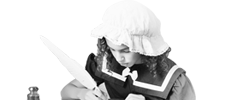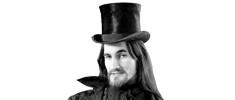‘High Sherrifs of Lancashire, 1162-1215’ by Colin Penny PhD
Adorning the walls of the Shire Hall Lancaster Castle are the coats of arms of those who have served in the office of Sheriff (later High Sheriff) in the County. The Sheriff was an individual, appointed by the monarch, whose original functions included the maintenance of law and order, together with responsibility for the collection and forwarding of tax revenues for the areas under their jurisdiction. For many years Lancashire tended to be allotted to the Sheriff of Northumberland, and it was not until 1181/82 that tax records for Lancashire were listed separately by the exchequer. Below are some brief accounts of the individuals who served as Sheriff prior to Magna Carta whose arms are now to be seen in the Shire Hall.
Bertram de Bulmer (1129-1130): Unusually, the de Bulmer family were not Norman, but of Saxon origin. This family seems to have thrown in its lot with the Normans from a fairly early date and, as a result, enjoyed considerable political advancement. Bertram, as Sheriff of York, was also given responsibility for the area between the Ribble and Mersey, and it appears that these duties remained with the de Bulmer family for many years – probably one of the few local families the Normans could trust. The de Bulmer’s power-base lay in Yorkshire and County Durham, their family seat was at Bulmer near Malton, and the family was responsible for the foundation of two castles (Brancepeth and Sheriff Hutton). The name ‘Bertram’ was given to sons of a number of generations, and the arms of Sir Bertram (Sheriff (?) 1162-65) can be seen in the Shire Hall (he died in 1166). A Bertram de Bulmer is listed as being present at the signing of Magna Carta at Runnymede in 1215 – he was one of the barons opposed to King John. Before long the male line of the de Bulmers ended and their lands passed, through marriage, to the powerful Neville family of Raby castle.
Geoffrey de Valoines (1160-1165): The lands of this family lay fairly locally, at Cantsfield and Farleton, although they also appear to have held extensive estates in Norfolk and Leicestershire. The accounts for this period continued to be dealt with by the de Bulmers as Sheriffs of York. The name suggests a Norman family. A Robert de Valoines was present at Magna Carta, again in opposition to the King. This family seems to have formed alliances with a number of key families, in addition to those mentioned below they were also linked to the Percys. Geoffrey died in 1190.
William de Vesci (1166-1170): Lord of Alnwick. A Norman family granted the lands of Gilbert Tyson, whose heir was killed at the Battle of Hastings. His father was William Fitz-John and his mother Beatrice de Vesci. William was Sheriff of both Northumberland and Lancashire simultaneously – he had been Sheriff of Northumberland since 1156. The de Vescis were responsible for the foundation of Alnwick Abbey, and towards the end of his life William assumed the habit of a monk. He died in about 1184, and was buried next to his wife by the Chapter House door of Alnwick Abbey. William’s son, Eustace, was married to Margaret of Scotland, daughter of King William the Lion, and became one of the prime movers behind Magna Carta; in 1212, following a failed rebellion, he was forced into exile in France for a short time – his lands being confiscated by the crown. He was also excommunicated. Eustace was present at the signing of Magna Carta, and on King John’s attempt to overturn the agreement, was instrumental in inviting the Dauphin to England to take John’s place – doing homage to him on behalf of the King of Scots. The hatred between the two men may have dated back some years, for John is said to have tried to seduce Eustace’s wife. Eustace was killed whilst attempting to lay siege to Barnard Castle in 1216. He named his son William (1216-c1297). In 1309 the de Vesci line came to an end and the barony was left to the Bishop of Durham who subsequently sold it to the Percys.
Roger de Herleberga (1170-1173): A Norman whose family resided in Norfolk.
Ranulph de Glanville (1173-1174): The family had estates in Eye, Suffolk. Undoubtedly one of the most important barons in the kingdom; his long career witnessed him achieve the heights of Treasurer and Justiciar. Ranulph was responsible for the first book of laws and customs in England (the De Legibus et Conseutudinibus Angliae), and acted as tutor to the future Kings Richard I and John. Whilst Sheriff of Lancashire, Ranulph also held the same post in Westmorland and Northumberland. Ranulph’s appointment here was almost certainly due to the outbreak of a major war with William the Lion, King of Scots; the campaign was very successful – trapping, and capturing William at Alnwick. Ranulph died on Crusade in 1194 at the siege of Acre. Interestingly, Ranulph married Bertha de Valoines (born c1120), a daughter of Theobald de Valoines of Parham – almost certainly a relative of Geoffrey (see above). His great granddaughter, Lady Mary Fitz Randolph of Middleham, married Robert de Neville (a direct descendent of Bertram de Bulmer). He also had a sister, Giva.
Ralph FitzBernard (1174-1185): Of Kingsdown and Tong, Kent. A Thomas FitzBernard, son of Thomas FitzBernard, is shown as holding the Kingsdown estate c1200.
Gilbert and Hugo Pipard (1185): From Buckinghamshire. During his career Gilbert held the position of itinerant justice and was Sheriff in a number of other counties. He was married to Alice de Rumelai, great granddaughter of Duncan II of Scotland (1060-1094), who was responsible for the foundation of Furness Abbey. The marriage did not produce any offspring; following her husband’s death, Alice married Robert de Courtney. Under Henry II Gilbert was sent to govern Ireland, together with John Cumin and Bertram de Verdon. At this time the island was under the overall control of Prince John.
Gilbert and Peter Pipard (1185-1188): Brothers.
Gilbert Pipard (1188-89).
Richard de Vernon (1189-1194): A Norman family, from Shipbrook-on-the-Weaver. Possibly to be identified as Richard de Vernon, baron of Osebrook (born 1121). Almost certainly a man favoured by Prince (later King) John as the latter held the Honor of Lancaster at this time.
Theobald Walter (1194-1199): Baron of Amounderness. His mother was Maud de Valoines, daughter of Theobald de Valoines of Parham. Theobald was the brother of Hubert Walter, Archbishop of Canterbury and chief advisor to King John. He married Maud de Vavasour. n 1199 Hubert laid siege to Lancaster Castle, and Theobald promptly handed it over to him. Theobald was responsible for the foundation of Cockersands Abbey. As Lord of the Honor and Castle of Lancaster, Theobald was entitled to appoint sheriffs. Theobald had two children – Theobald le Boteler and Rose de Verdon. The fact that Nicholas de Boteler was sheriff under Theobald must have some significance. Both Theobald and his brother Hubert died in 1205. As butler to the King, Theobald accompanied Henry II to Ireland and was granted extensive estates there; the Butlers of Ormande are certainly linked to his family – Theobald probably died in Ireland.
Benedict Gernet (1194-1196): From Caton, Master Serjeant of the Forest of Lancaster. A Mathew Gernet is recorded in the Pipe Rolls for 1193-1194 as being charged 10 marks for his pardon for joining Count John’s muster at Kendal. Benedict had a son, William, who succeeded his father as Forester in 1204/1205.
Robert Vavasour (1196-1197): Of Hazlewood, near Tadcaster. An example of nepotism – Robert was the father-in-law of Theobald Walter; he also served as Sheriff of Derbyshire and Nottinghamshire.
Nicholas de Boteler (1197-1198): Either from Norfolk or from Carnforth. Possibly butler to Hugh Cyvelock, Earl of Chester.
Stephen de Turneham (1199): From Artington, Surrey. Stephen was a very important minister, judge and soldier. During the Crusades he was appointed Governor of Cyprus. A Stephen de Turneham is recorded as marrying Edelina Broc; their daughter was married to Roger de Leybourne, Lord Berwick (died 1220). During Stephen’s term in office a number of knights were stationed at Lancaster Castle to keep watch on the surrounding area following the death of king Richard I.
Robert de Tateshall (1199-1200): From Tattershall near Pontefract. The son of Philip de Tateshall. Having spent a year as Sheriff of Cumberland, Robert was appointed to the same office in Lancashire. He is thought to have been the builder of Middleham Castle, which was to later become a favourite residence of King Richard III. King John and the court visited Lancaster Castle during Robert’s tenure of office.
Richard de Vernon (1200-1205) and William de Vernon (1204-1205): This was Richard’s second stint as Sheriff, and in his final six months of office he shared the appointment with his brother William. Although he officially ‘retired’, Richard jumped before he was pushed. He had not executed the King’s mandates thoroughly enough, and was fined 40 marks and a palfrey. William went on to gain a knighthood and employment as a justiciar.
Gilbert Fitz-Reinfrid (1205-1215): Baron of Kendal, Warton and Nether Wyresdale; Sheriff of Yorkshire 1209-1212. He was the son of Roger Fitz-Reinfrid and Rohaise (niece of the Earl of Chester). He married Hawise (heiress of William de Lancaster II), and was father of William de Lancaster III, Roger de Lancaster (Lord of Rydal), possibly John, and also Hawise de Lancaster. He served as Steward to Henry II in France (1180-1189), and later to Richard I. He was opposed to the King over Magna Carta and as a result lost his titles. He died before 1220.
Adam Fitz-Roger (de Carlisle) (1205-1216): The son of Roger de Yealand, he was appointed Sheriff by Gilbert Fitz-Reinfrid and continued in office after the latter’s fall from favour. He was later knighted.
Reginald de Cornhill (1215): From the Isle of Thanet, he was the son of Gervaise de Cornhill of London. The de Cornhills made their money through trade, and so were very experienced in maritime affairs; indeed, a Henry de Cornhill had been responsible for organising the fleet King Richard raised for the Crusade. For much of the reign of King John, Reginald was given various important customs, taxation and fleet duties. In 1215, however, he was sent to Lancaster, following the rebellion of Gilbert Fitz-Reinfrid, to act as custos. He appears to have worked alongside Adam Fitz-Roger. At this time he was also Sheriff of Kent and Constable of Rochester Castle. Clearly, Reginald could not be present at Magna Carta, but Henry De Cornhill is attested at Runnymede on the side of the King.
By September 1215 Reginald was back at Rochester when the Archbishop of Canterbury laid siege to the castle there; Reginald simply opened the gates. John was furious, he later retook the castle and Reginald de Cornhill was imprisoned; William de Lancaster III must have accompanied Reginald south, for he was also taken prisoner at the same time. This may indicate that Reginald was ‘converted’ to the rebel cause during his time in Lancaster. A William de Cornhill was Bishop of Lichfield 1208-1215.
Ranulph de Blundeville (1216-1222): Earl of Chester; appointed Lord of the County by King John following the rebellion of his relative, Gilbert Fitz-Reinfrid, in 1215. He appointed his own sheriffs, the first of whom, Jordan Fitz-Roger, may have been a brother of Adam (above). He died in 1232. One of his sisters married Earl Ferrers (sheriff 1223-1228). Ranulph, through his marriage to Constance de Bretagne (Duchess of Brittany) in 1188, became Duke of Brittany and Earl of Richmond. Constance, however, refused to recognise the marriage on grounds of consanguinity. In 1216, due to his loyalty, King John created him Earl of Lincoln. Earlier in his career he had fought with Henry II, and participated in the fifth crusade. In Piers Plowman his name is linked to Robin Hood. He appears to have died without issue.








